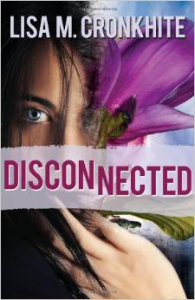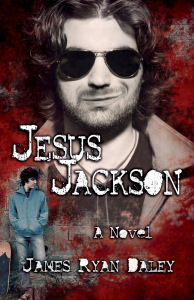Pride Week Guest Post from Ellen Larson: Diversity and the YA Mystery
Stats don’t lie
As someone with more than a passing interest in young adult fiction, I ran across a compelling article by Malinda Lo last fall called “Diversity in ALA’s Best Fiction for Young Adults.” Among other stunning stats was this nugget about racial diversity: Less than 20 percent of the characters in YA lit were kids of color. On the other hand, according to some non-literary news that had come out the previous year, for the first time in history the total number of non-white babies born in the U.S. was more than the total of white babies born. I read another survey that said the number of non-white protagonists (as opposed to characters) in YA fiction in a recent year was only seven percent. For me, this was something to chew on: the majority of today’s generation is non-white, but the books we are busy writing for them overwhelmingly feature white characters.

The Poisoned Pencil, June 2014.
I don’t know enough about it to discuss why this is so, or to guess at what underlying sociological factors cause this disparity. But, as luck would have it, I am in the unique position of being able to do something about it—in a small, probably-nobody-will-notice-but-us-but-at-least-we’re-doing-something sort of way. I am the editor of the Poisoned Pencil the new young adult mystery imprint of Poisoned Pen Press), We are a tiny imprint–we only plan to publish four titles a year for our first couple of years–but thanks to the distinctive leadership style of publisher Robert Rosenwald, we are as free-wheeling as it gets. He may yet regret the day he said to me, in response to my warning that I had ideas about such things, “Pick the ones you like; who cares what anyone else likes?” NB Yes, I live a charmed life.
The Poisoned Pencil
That was in the summer of 2012, when we set out to define our brand. We decided to more or less avoid books with a supernatural element, because that’s what everyone else was doing. I’d rather rot in hell that work with those “mean girls” sorts of books, which anyway tend to be badly plotted and shallow. We wanted something serious with message. We called it “creepy” or “le creep”—until people started thinking we were doing horror, then we pulled back to “edgy” and “relevant.” And in my head I wondered how I would deal with the diversity issue.
To me, continuing the trend of publishing YA books with WASP protagonists would be a huge disservice to the literary community. I happen to be one of those people who believe that the best writing says something; in fact, every time you write something you’re saying something. Even if you don’t know it. So you better pay attention to what you’re writing. The point is that writing books that underrepresent minorities is saying something. And it’s not something I care to say.
But I digress
The stats in Melinda Lo’s article tell a similar story of under-representation when it comes to gender diversity and characters with disabilities. In fact (my favorite stat), the number of YA books featuring LGBTQ protagonists in 2013 was two percent. Note that there is a huge difference between being a character and being a protagonist in a book. In fact, it is clear that YA fiction suffers from Minority Sidekick Syndrome, itself a well-known form of prejudice.

The Poisoned Pencil, September 2014.
The submissions I’ve seen in the past two years at the Poisoned Pencil bear this out in spades. Every white protagonist has a Hispanic, or African American, or gay, or disabled best friend or love interest (which I guess is a step in the right direction). These characters were written with an absence of self-consciousness that was quite pleasing. But eighty percent of the protagonists were WASPs.
For a while I worried that I would end up passing on a great book with a white protagonist; that I would lose my literary way in my quest for diversity. But as it has turned out, there has been no problem. I am primarily looking for books written with an original voice, and so far it seems that those are also the books that reflect the sort of diversity I’d hoped to find. Indeed I something think I sound like a suburban club wife who boasts that she has friends/books that are African American, Native American, atheist, Hispanic, and mentally ill. (Note to self: try to be cooler.)
Even though I’m happy with the new list from the Poisoned Pencil, I want more. The field is staggeringly, cavernously open. Where is the YA mystery with the protag who is Muslim? Where is the teen dreamer, who would love to go to the cops to help solve a crime, but is afraid of being deported? Boy, that sure solves the perennial problem of having to explain why the amateur sleuth doesn’t go to the cops, doesn’t it! Where is even one LGBTQ protagonist? Just as a character choice—I don’t need or necessarily want a YA mystery with a heavy LGBTQ theme (you tend to end up with too much going on). Though to be sure there are LGBTQ protagonists out there in YA mystery fiction (check out the works of Greg Herren), my submissions inbox at Submittable remains empty of such treats.
What’s the hold-up?
The problem can be directly traced to the fact that the overwhelming majority of YA mystery writers are white women. Look at the faces of the 600 or so who have friended the Pencil’s facebook page. So, what, are they all racists or homophobes? Far from it. In general, writers know they have to have a very high level of knowledge when creating a character not of their own ethnicity or religion, so it’s a bit of an ask, especially when talking about a book’s protagonist. A lot of writers think that it’s verboten, or that they might be criticized for putting themselves forward in that way. Indeed, some writers have been subject to personal and professional attack from daring to take on persona not their own.
I have a theory that it is easier for a writer to get away (if that’s the right term) with creating a protagonist not of their own group when writing short fiction. In my own short mystery “When the Apricots Bloom” (AHMM June-July 2009; Barry Award Finalist) my protagonist is a Muslim woman. But even I, who lived in Egypt for fifteen years and speak quite a bit of Arabic, would think twice about writing a novel from the prospective of a Muslim—though from the effort it would involve, not from fear of recrimination.
Is it intrinsically good or evil to write an LGBTQ protagonist if one is straight? To create an African American or Hispanic or Jewish protagonist if one is a WASP? I can only say it’s fine with me (hint hint). Historically, no one questions it when an African American creates a white protagonist. And as young adult mystery author Peter Abrahams said, in response to a question about why he chose to write from the point of view of a teen-aged girl, “People have written from the point of view of robots. Why not the opposite sex, or a child, or anything else?”
Hear hear.

Ellen Larson.
After 20 years working as a writer and editor in Egypt, Ellen Larson was recently named editor of The Poisoned Pencil, the YA mystery imprint of Poisoned Pen Press. Ellen, who lives in an off-grid cabin, also writes. Her fiction has appeared in Yankee Magazine, Bloodroot Literary Magazine, Alfred Hitchcock’s Mystery Magazine (Barry Award finalist), and Big Pulp Magazine. Her dystopian murder mystery, IN RETROSPECT (Five Star Gale-Cengage), was released December 2013 to rave reviews.








